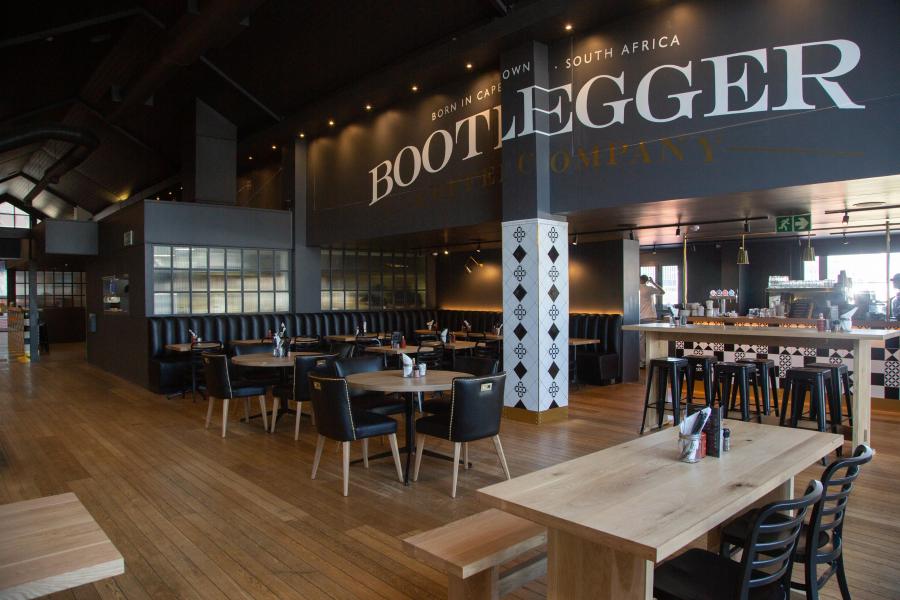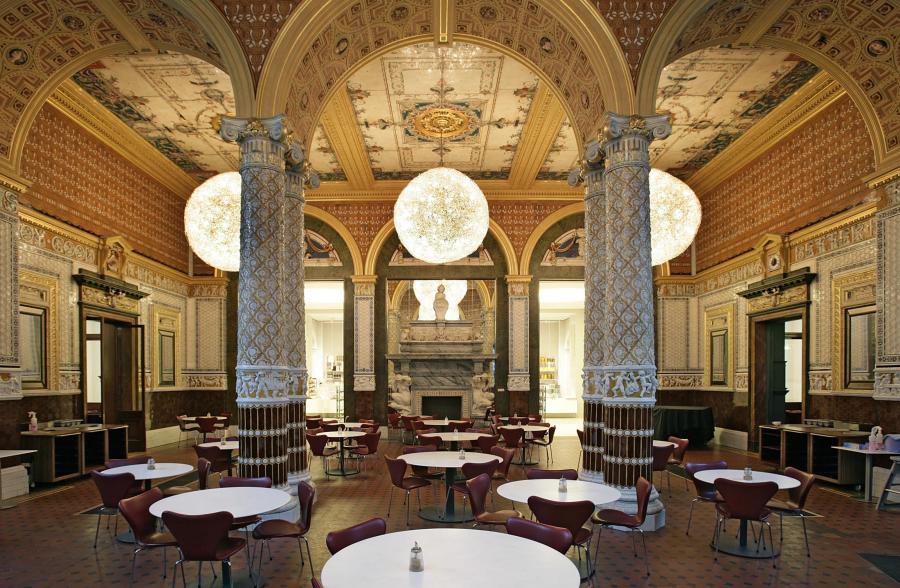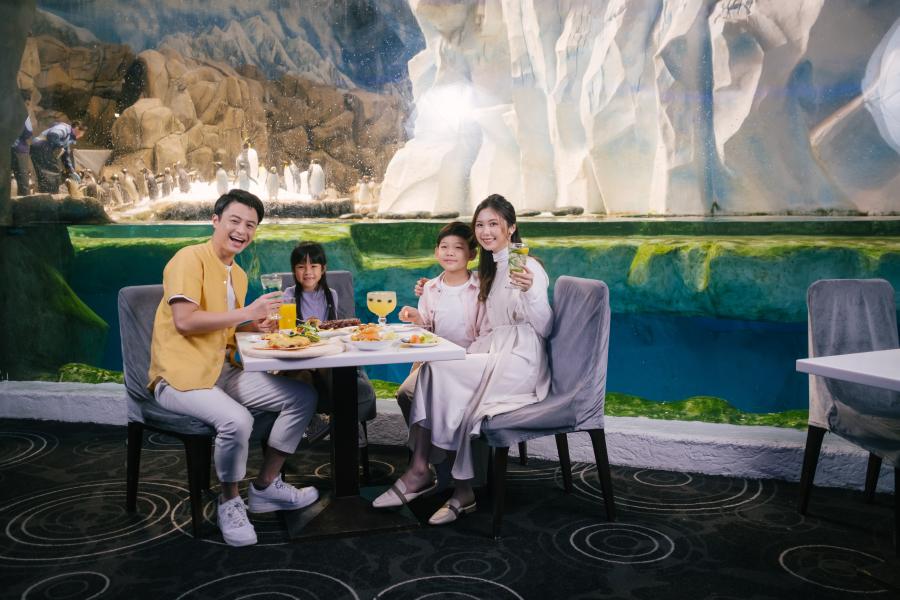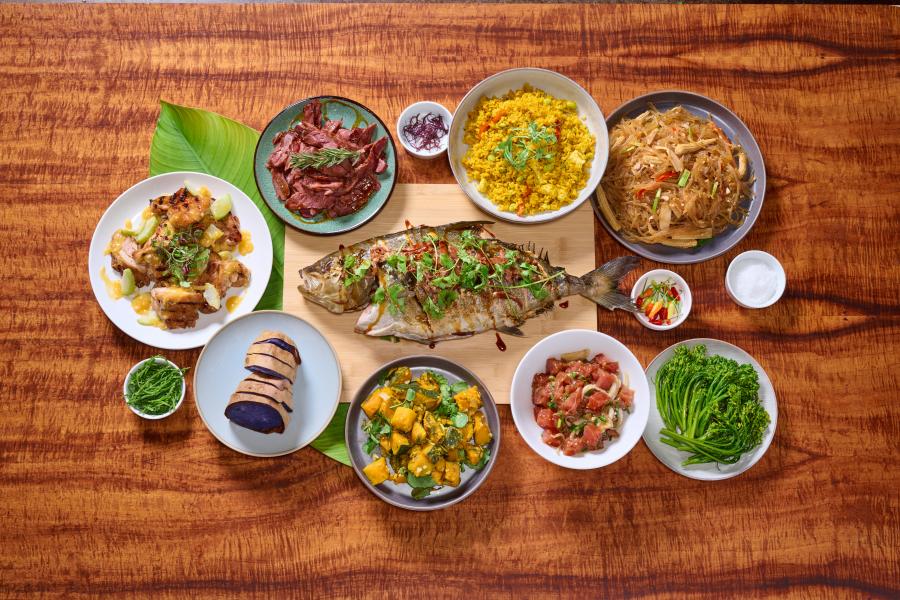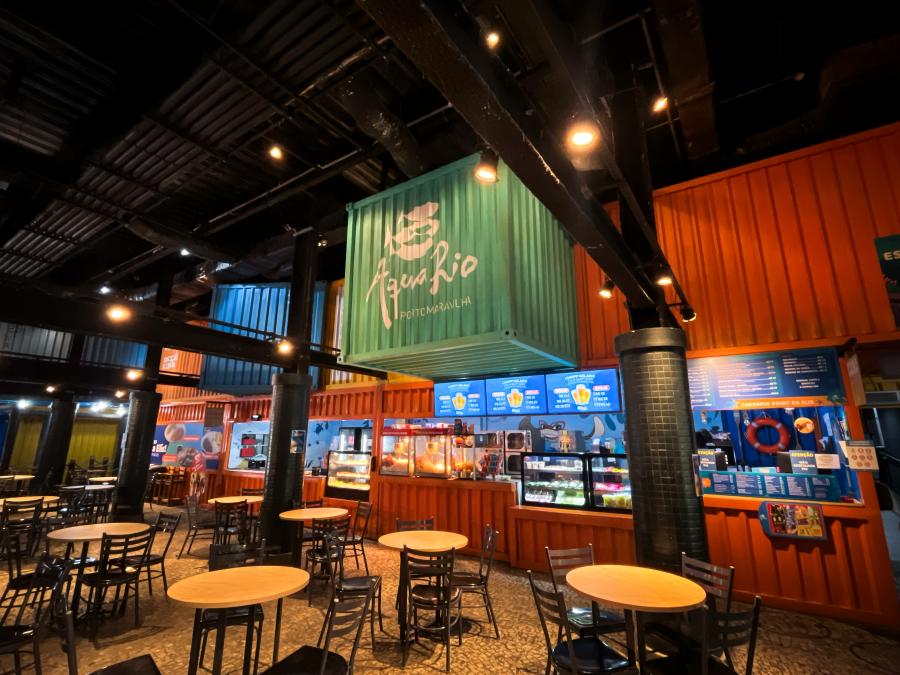While museums, aquariums, and other educationally focused attractions are known for their exhibits and programs, many have made a name for themselves with distinguished dining programs.
Focusing on sustainability, using locally sourced ingredients, meeting special dietary needs, and celebrating cultural cuisines are some ways in which the restaurants and cafes at attractions around the globe are using dining experiences to differentiate themselves.
Funworld offers a look at how six have developed world-class culinary experiences for their visitors.
Monterey Bay Aquarium
Perched above the Pacific Ocean, the dining experience focuses on telling stories through food at the Monterey Bay Aquarium in Monterey, California, says Executive Chef Matthew Beaudin. “From a culinary perspective, we hope to share the stories of the farmers, fishermen, and ranchers who make it possible for us to create the magic we do,” he explains.
Sustainability is also at the core of their food services, Beaudin says, which includes eliminating all plastic from the service area of the restaurant and working with suppliers to eliminate plastic, cardboard, and packing foam in deliveries. “As more and more information becomes available regarding microplastics and pollutants in the supply chain, we are increasingly looking for solutions ... the best first step is to begin asking questions and see where you can align with your partners and find
synergies for sustainability,” says Beaudin. Thus, deliveries arrive using reusable plastic crates. “Engaging with local vendors and working with Seafood Watch to identify green Best Choice seafood helps us drive the broader message of sustainability to guests and be a steward of the environment and conservation efforts,” he adds. The green Best Choice designation comes from
Seafood Watch’s sustainable seafood advisory list—which is created and used by the Monterey Bay Aquarium to mitigate the environmental impact of seafood consumption.
The Monterey Bay Aquarium also extends its sustainable efforts to its waste. Vice President of Sales John Abrahamson explains, “We are extremely conscientious of our waste. We do not have any trash cans available to guests. Our cafe staff hand-sorts all waste to ensure that it is properly categorized. We also do quarterly, aquarium-wide trash audits that are initiated and led by our senior sustainability program manager.”
Two Oceans Aquarium
Meeting sustainability requirements was a non-negotiable term for Two Oceans Aquarium in Cape Town, South Africa, when senior management decided to seek an outside restaurant operator to manage its restaurant, explains Guest Experience Manager Alichia Nortje.
“The aquarium included sustainability principles in our lease agreement, which addressed waste management, energy and water consumption, procurement principles, and a strict view on single-use plastic with specific emphasis on banning the use of plastic straws,” she says. “We pride ourselves on providing excellent customer care throughout the visitor journey, and at every touch point, we wanted to align with a restaurant operator that could support our service standards.”
For aquariums or museums considering outsourcing their restaurant, Nortje says to remember there isn’t a one-size-fits-all solution. “Attractions will need to carefully consider the benefits, challenges, and costs associated with each,” she adds. “By the time we decided to outsource our restaurant service, we had tried several options over a period of time, allowing us the opportunity to measure the success and draw sufficient insight into its effectiveness.”
Victoria & Albert Museum
At the Victoria & Albert Museum in London, visitors can find several dining spaces focused on different needs, from a full lunch to patisserie items and coffee, says Gianmaria Baldassarre, operations manager of public spaces for Benugo, the catering contract partner for the museum.
“We work in partnership whenever possible to design menus inspired by exhibitions and working with the visitors in mind, as well as responding to trends but keeping a differentiated touch with hero dishes and items such as scones, Victoria spongecake, and pies,” he details.
As guests increasingly expect dining services to cater to food allergies or other dietary needs and preferences, Baldassarre says the team strives to develop menus that consider common dietary restrictions, with gluten-free, vegan, and vegetarian dishes available, along with a limited choice of red meat.
“We follow all relevant regulations in terms of allergies, but as with any catering serving a variety of food, there is the possibility of contamination,” he continues. “We recommend our guests to talk to our staff about their requirements so that we can cater for their needs with peace of mind.”
Ocean Park Hong Kong
Visitors to Ocean Park Hong Kong can explore diverse culinary experiences and dishes within seven themed locations, including Neptune’s Restaurant. The space immerses guests in a deep-sea world featuring 5,000 fish from more than 400 species swimming in a colossal aquarium. Meantime, Tuxedos Restaurant in the South Pole Spectacular themed realm provides panoramic penguin views.
“Ocean Park Hong Kong is committed to conservation and education,” says Ivan Wong, chief executive of Ocean Park Corporation. “Our food and beverage offerings are a vital part of this mission. We want to raise environmental awareness through delicious cuisine and a memorable experience.”
In addition to a focus on sustainable dining, Ocean Park also advocates for Hong Kong’s Eat Local movement by using locally sourced ingredients. “This reduces the park’s environmental impacts and supports biodiversity by reducing packaging and transportation emissions,” Wong says.
“Neptune’s Restaurant, at the forefront of this initiative, features talented chefs who consistently impress visitors with delectable dishes that highlight the flavors of local ingredients. Through their culinary creations, they aim to reshape visitors’ perspectives on embracing a low-carbon lifestyle.”
Polynesian Cultural Center
The Polynesian Cultural Center in Laie, Hawaii, on O’ahu, offers a distinctive dining experience that celebrates the rich cultures and cuisines of the Pacific Islands. “Our dining services are centered around Polynesian-inspired dishes, highlighting traditional recipes and flavors from Polynesian island nations and Pacific Rim countries that have influenced Hawaii’s culinary landscape,” Executive Chef Felix Tai says.
Through the Center’s Ali‘i Lū’au and Gateway Buffet, Tai says there’s no better way to share aloha than through food. “Food is culture, and food is love, forming a profound connection between authenticity and cultural heritage,” he continues. “While rooted in tradition, our approach is chef-driven, blending traditional flavors with modern techniques to offer our guests a dining experience that is both authentic and innovative—unique to the Polynesian Cultural Center.
“My advice for any organization looking to enhance their food offerings is to embrace their culture authentically. Knowing who you are and owning it cultivates authenticity, fosters growth, and drives positive change.”
AquaRio
The three food stations located throughout AquaRio in Rio de Janeiro are part of the aquarium’s main pillars of creating a successful visitor experience, says Adelio Demeterko, operations director of Cataratas Group for AquaRio.
“The options on the aquarium’s menu are practical and tasty,” he explains. “The menu is constantly revised, and new dishes are added. In the beginning, the aquarium [started] with snacks like pizzas and popcorn. Today, [it] is possible to find a complete lunch option with starters, main dishes, and desserts.”
Demeterko says they also offer healthy options and Brazilian cuisine classics, such as picadinho de carne (a chopped meat dish) and brigadeiro—a famous sweet popular in Brazil—a kind of chocolate truffle, açaí, and cheese bread.
“Good food is also part [of] the visitor experience,” he continues. “That’s why [it] is important to invest in menus that value a local cuisine and the origin that comes from a good local producer. Above all, invest in packaging recycling because it’s important for the conservation of marine biodiversity.”
- This original reporting from IAAPA News first appeared in Funworld magazine. For more stories and videos covering the global attractions industry and to read a digital version of Funworld magazine, click here.


